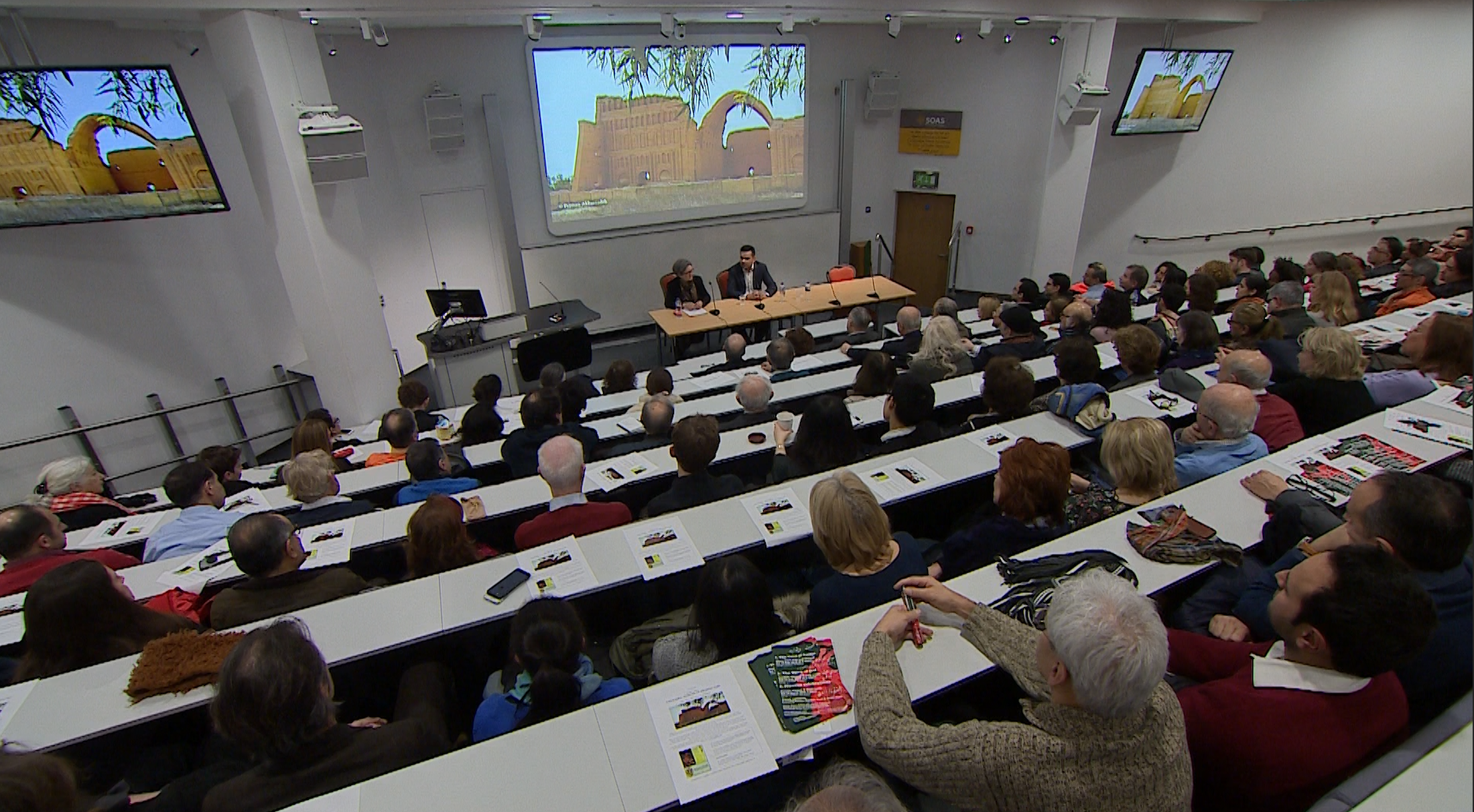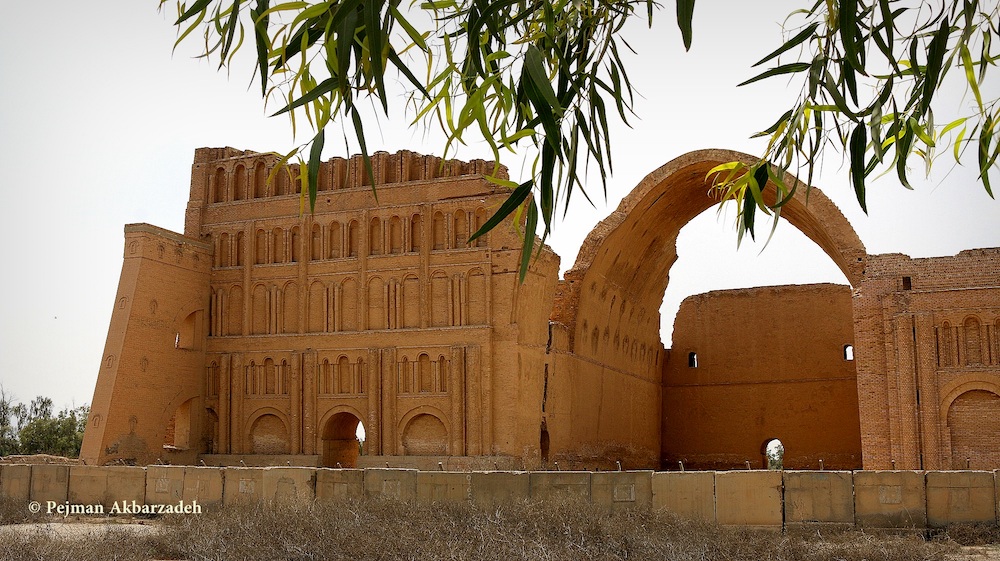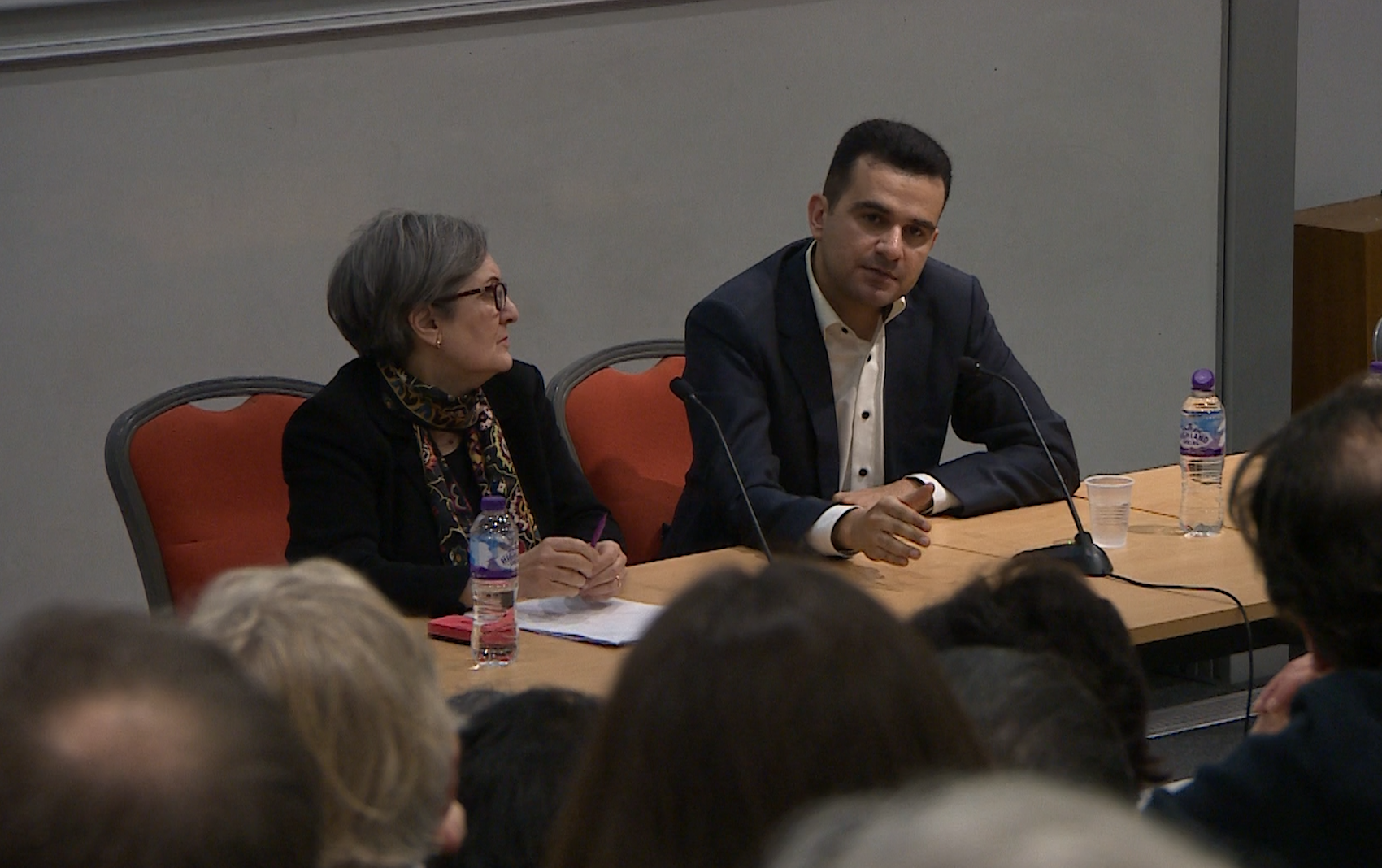
Nader Soltanpour
BBC Persian Service
2 February 2018
Taq-e Kasra, which its history goes back to around 2000 years ago, is cited as the world’s largest brickwork vault. It was a palace in Ctesiphon (Mada’in) and one of the most magnificent monuments of Sasanian Persia.
Taq-e Kasra is located in south of Baghdad. Last night a documentary was screened at SOAS, University of London which was the world premiere of the film. Pejman Akbarzadeh has made this documentary and is here with us:
Q: Please tell us about the historical architectural importance of Taq-e Kasra.
A: Taq Kasra, or Arch of Ctesiphon, which its height is 37 meters, is the largest single-span brick vault. It is the symbol of Persian Empire in Sasanian era. As the monument is not located in the Persian territory for centuries and also the situation is Iraq is critical, the arch has been neglected. Taq Kasra is in the area that Sasanian army was defeated by the Arab army [in the 7th century AD], and is therefore of historically importance, particularly for Persians (Iranians).

During the 2015-2016 presence of ISIS in Iraq, Taq Kasra was in serious danger because of the group’s hostility with the historical sites. ISIS was just 60 KM away from Taq Kasra and actually this was one of the main reasons that I made this documentary because I was quite frightened. They could attack this arch and the damage inflicted upon cultural heritage in northern Iraq, could befall this arch as well.
Q: How has Taq Kasra been identified in the contemporary era?
A: I can say since Reza Shah era a new movement was started to reintroduce the arch. Postal stamps depicting Taq Kasra were printed. Also the architecture of the National Museum of Iran was inspired by Taq Kasra. Actually in the film we have a special section with Ali Mozaffari, an expert of architecture and heritage at the Australian Research Council, which explains in a period that Persian society was dominated by the religious values, the government started movements to make (re)acquaint people with the past.

Q: The artifacts discovered from the archaeological digs in the area, where are they kept at present?
A: It is an interesting point that those who are interested in the history of ancient Persia in Sasanian era cannot see these artifacts inside the country. This is because the main excavations around Taq Kasra were done in 1929 by German expeditions and in 1931 by American teams joined them and the artifacts that were discovered during these expeditions, the largest collection is kept at Pergamon Museum in Berlin and a smaller collection at the Metropolitan Museum in New York.
Q: Because of its geographical position, being a Persian historic monument near Baghdad in Iraq, and given the relationships between the two countries in recent decades, which include serious tensions and an eight-year war, how is this monument perceived and how was it used?
A: Since early 1980s there were two moves for instrumentalising Taq Kasra and its use for ideological propaganda by both governments of Iran and Iraq. Saddam Hussein used it as the symbol of the Persian defeat in Iraq. He even commissioned North Korean painters to paint a panorama of the [Qadasiyya] battle in the 7th century AD to which was erected opposite Taq Kasra for all visitors to see – indeed the place had become a tourist attraction.
And in Iran as an Islamic Revolution had happened, the officials used to promote the idea that ancient Persia was full of injustice and it was Islam which brought equality to the Persians. They used to promote a hadith which indicates when the prophet Mohammad was born the arch cracked. But similar to Noah’s ark story there is no historical basis to this claim.
However, an interesting point is that in last night’s premier at the University of London, lots of Iraqis residing in the UK, also attended the event who expressed a lot of positive emotions, despite the fact that the film is more focused on Persia (Iran) and the Sasanian history. It appears that despite all such propagandas, Taq Kasra is itself turning into a topic that may bring the people of Persia and Iraq closer to each other.
Source: BBC
[The world premiere of “Taq Kasra: Wonder of Architecture” was organised by the London Middle East Institute (LMEI) at the University of London. Special Thanks to Dr. Hassan Hakimian, Dr. Cyrus Alai, Vincenzo Paci-Delton, Aki Elborzi and Fataneh Farajollahi].
“Taq Kasra: Wonder of Architecture” is produced by the Persian Dutch Network, in association with Toos Foundation in London and funded by Soudavar Memorial Foundation in Geneva.